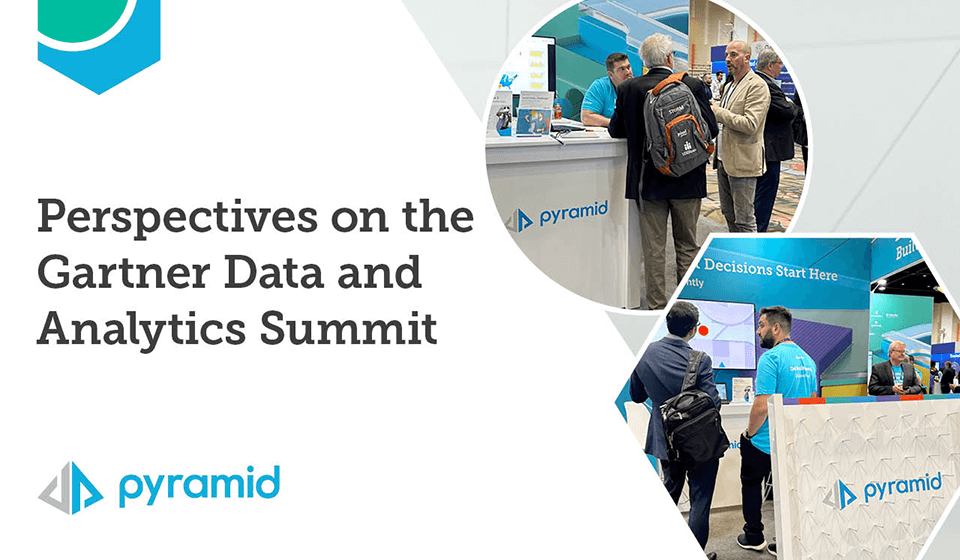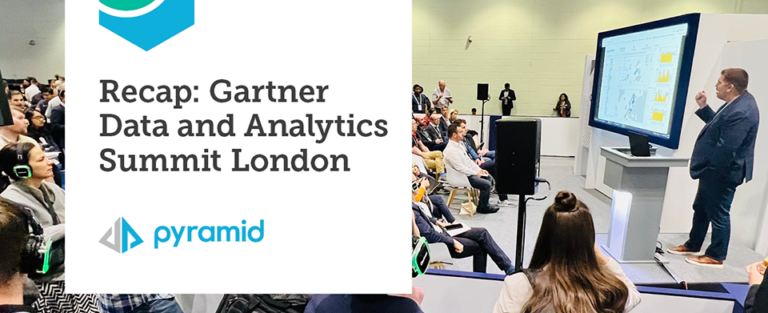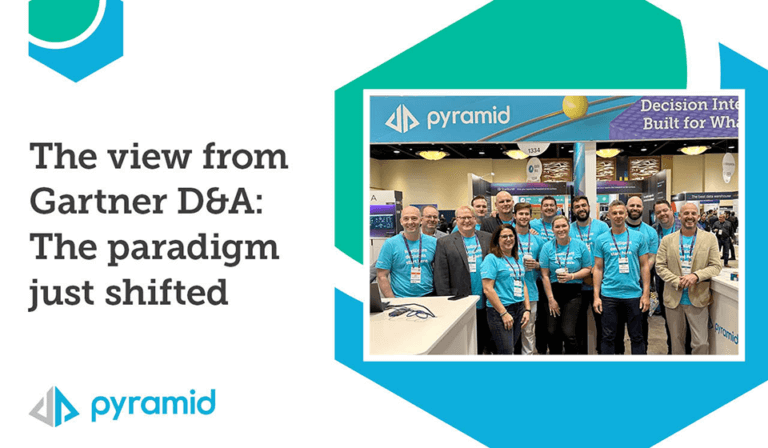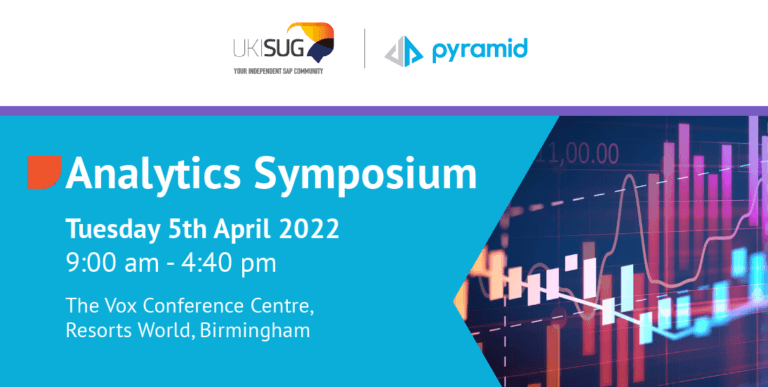Disclaimer: This article is the opinion of Pyramid Analytics and does not constitute an endorsement by Gartner.
Before addressing the major themes that emerged from the 2023 Gartner Data and Analytics Summit 2023 this week in Orlando, I just wanted to note that it’s been a long time since I’ve seen so much energy and anticipation around the data and analytics space. With many standing-room-only sessions and constant activity at our booth, it was obvious that data and analytics leaders are looking for solutions to navigate the future. Some big shifts are occurring in the industry, reflected in the following themes:
- First, data science, machine learning, analytics, and business intelligence platforms are converging into single, unified platforms.
- Second, generative AI (ChatGPT) represents a “step function” in the evolution of augmented analytics as vendors incorporate it into many aspects of the analytics workflow.
- Third, the next leap in data and analytics is decision intelligence, including decision support, decision augmentation, and decision automation.
According to Gartner, within the next three years, 50 percent of organizations will be evaluating analytics, business intelligence, and data science platforms as “all-in-one” platforms. Gartner sees a convergence of these platforms, which marks a huge shift in the industry.
This is not news for Pyramid Analytics customers since the Pyramid platform was built from inception as a unified, single platform for data prep, data science, and business analytics. Vendors like us who were ahead of the convergence curve are well positioned, but look for changes in the overall landscape.
Hey, bot, what’s next in analytics?
Generative AI, specifically ChatGPT, was the SNT-factor (“Shiny New Toy-Factor”) at the conference. You could count the seconds in any conversation before ChatGPT was mentioned. Announcements from hyper-scalers aside, major analytics platform providers like us announced new capabilities.
We announced the ability to leverage ChatGPT directly in the platform for generating code for query (SQL, MDX, et al) and AI/ML modeling (Python, R, et al.), as well as the ability to invoke business modeling functions in our new Tabulate module and use natural language for visually enhancing dashboards and visualizations.
One thing I learned in writing this post is that ChatGPT is not exactly humble, and it also considers itself a competitor to most ABI platforms. I asked ChatGPT to describe itself for this post; here’s the response below.
ChatGPT: “Generative AI can be a valuable tool for analytics and business intelligence, as it can help organizations make better decisions by generating insights from large datasets.”
Hey, hold on; that’s part of our value proposition!
ChatGPT then cites use cases where it can be applied, including data synthesis, anomaly detection, predictive analytics, customer segmentation, sentiment analysis, and trend analysis. But interestingly (again with a bit of hubris), ChatGPT states, “Overall, generative AI has the potential to revolutionize analytics and business intelligence by providing new insights and improving decision-making processes.”
All kidding aside, Pyramid considers Generative AI (ChatGPT) an ally and a game changer. We fully intend to bring all the innovation it promises to our augmented analytics platform to responsibly serve all data and analytics professionals.
But wait, there’s more: governance and semantic models
Aside from all the talk about “what’s next,” governance is back with a vengeance. I can’t tell you how many times the G-word came up while talking with enterprises at the event. The pendulum has definitely swung back on this topic. Governance was mentioned in every aspect of every conversation, including around innovations like Generative AI. In fact, Gartner says that by 2026, 20 percent of large enterprises will use a single data and analytics governance platform.
The other “oldy but goody” topic was semantic models. Semantic models have always been core to our industry. Still, for whatever reasons, they seemed to take a back seat for a long while to things like storytelling, visualizations, self-service, and other trends that persist. But there was a lot more focus this year among prospects I spoke with on core capabilities like query performance, semantic models, dashboards, and embedding.
Pyramid Analytics: An eye on the future
As a pioneer in the nascent Decision Intelligence category, Pyramid welcomes the attention paid at the Data and Analytics Summit to Decision Intelligence, aptly titled in one presentation “The Next Leap for Data, Analytics and AI.” With a focus on augmenting decisions, prescriptive analysis comes into focus with techniques like constraint optimization, simulation, what-if analysis, and others. Pyramid incorporated these capabilities into its platform recently with Tabulate and Solve.
With a leading NLQ, NLG, and Chat Bot, Pyramid is ahead of the curve on leveraging language technologies for higher-order decisions, which Gartner noted: “breaks down communications barriers to make analytics friendly for the masses.”
Pyramid Analytics seems to be in pretty good alignment with the major themes and market trends at the Gartner D&A 2023 Summit this week. And the energy and engagement at this summit were tangible, in everything from the standing-room-only sessions to the traffic at our booth. Anyone who has attended this event in the past would recognize that those attending can feel a major shift is underway, and they are looking for solutions for the future.
Pyramid is looking forward to being part of that journey.
Tell me what I missed! I’d love to hear your perspectives on the summit.






